My recent camping trip to the Mojave Desert of southwestern Utah was slow on birds but I didn’t come home “skunked” either.
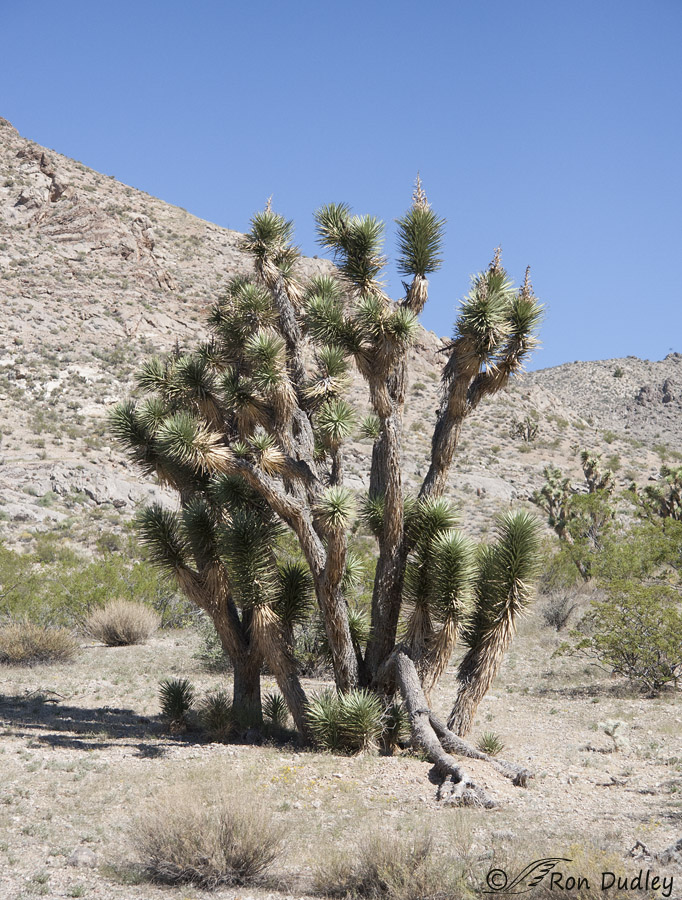
Most folks think St. George is the hottest place in Utah with the lowest elevation. They’re wrong on both counts. That distinction belongs to Beaver Dam Wash in the extreme southwest corner of the state where the elevation is about 2178 feet compared to the average elevation of St. George of 2800 feet. One of the major indicator species of the Mojave Desert is the Joshua Tree, a type of yucca whose trunk is made of thousands of small fibers (thus it lacks annual rings) and can live up to 1000 years. They have bayonet-shaped evergreen leaves that taper to a very sharp point and are arranged in a dense spiral at the apex of the stems. This photo was taken near Beaver Dam wash.
The distinctive common name of this tree was bestowed by a group of Mormon pioneers in the 1850’s because its unique shape reminded them of the Biblical story of Joshua as he reached his hands into the sky in prayer (works for me…)
As a child in the 50’s my family drove the 1400+ miles between northern Montana and southern California twice every year (long story) and as we traveled south from Cedar City to St. George (long before Interstate 15 was built) it was always a competition between the five of us to see who would spot the first Joshua Tree. My mother adored those trees. Looking back I suspect it was an effort by my parents to keep us rambunctious and bored kids entertained and mostly out of trouble. Back then it was a long, slow and tortuous trip.
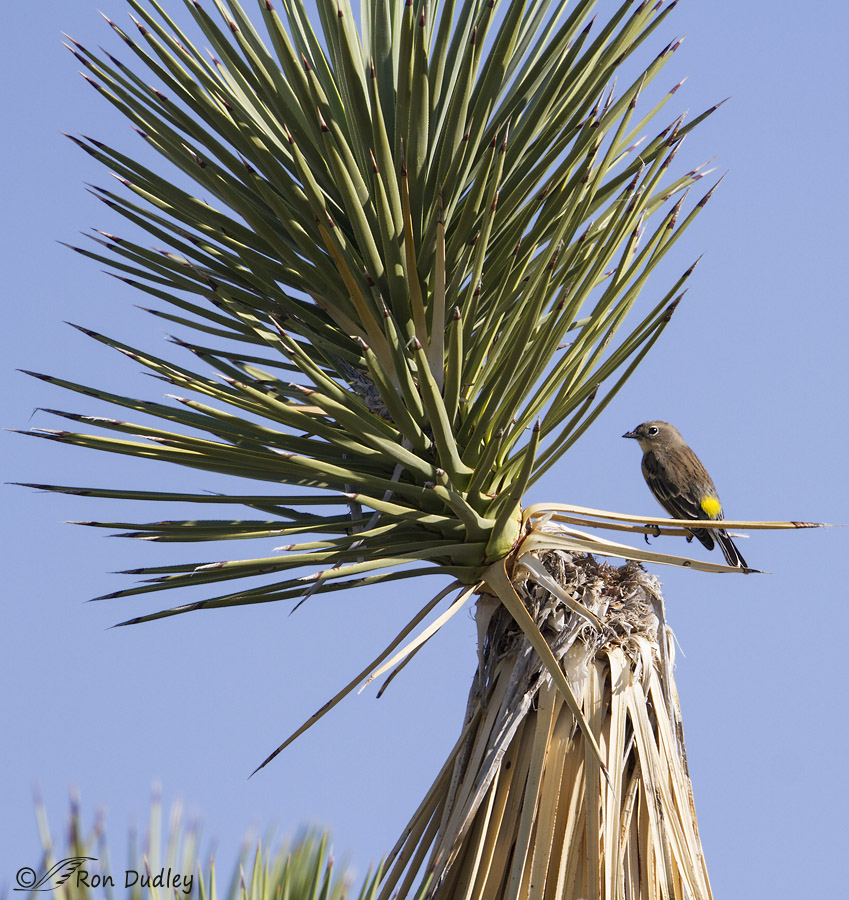
1/2000, f/6.3, ISO 500, Canon 7D, Canon EF500mm f/4L IS II USM +1.4 tc, not baited, set up or called in
Here’s a closer look at a spiral leaf cluster at the end of one of the stems. Notice how the older leaves hang down when they die. These trees help to provide critical habitat to many species of vertebrates and invertebrates including this Yellow-rumped Warbler (butter butt) but sadly Joshua Trees are critically threatened by climate change and their long-term survival hangs in the balance.
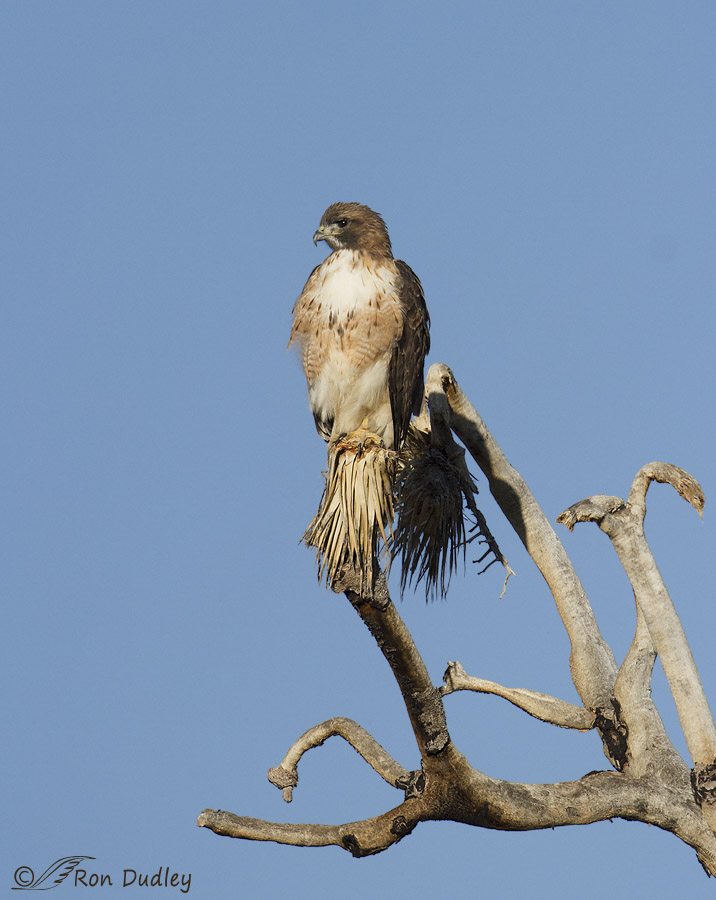
1/3200, f/7.1, ISO 500, Canon 7D, Canon EF500mm f/4L IS II USM +1.4 tc, not baited, set up or called in
One morning on the dirt road leading to Beaver Dam Wash we found this adult Red-tailed Hawk perched in a dead Joshua Tree. I was amused by how much the remaining cluster of hanging dead leaves resembled a faux tail on the hawk.
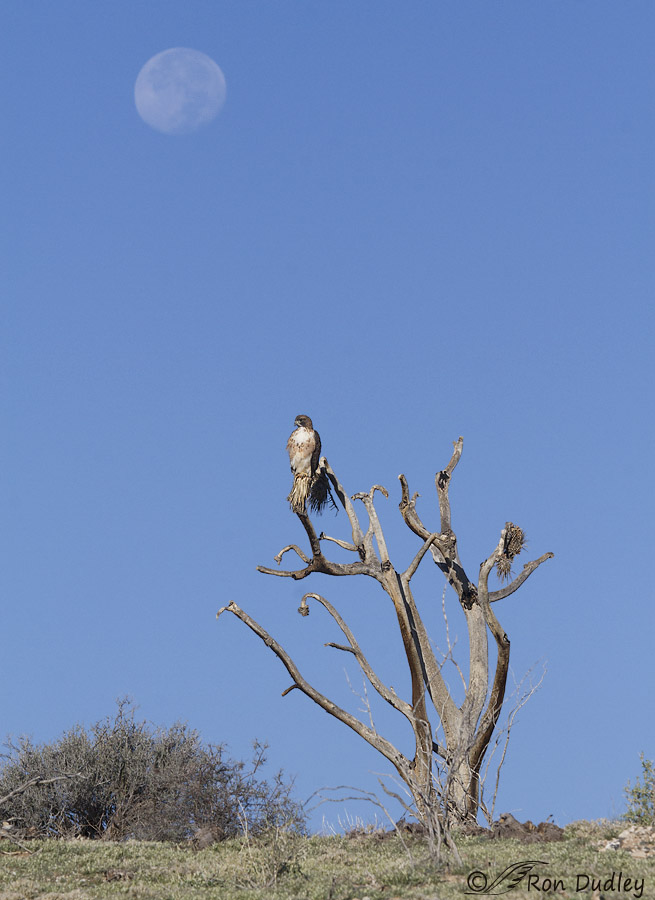
1/1250, f/11, ISO 500, Canon 7D, Canon EF100-400mm f/4.5-5.6L IS USM @ 220mm, not baited, set up or called in
Here’s a look at the bird and setting at only 220 mm. The setting moon was still bright in the sky this early in the morning so I hung around for quite a while as I waited for it to get low enough to include in some of the images I took of the hawk with the longer lens. I was barely able to include it by using my zoom lens at 220 mm and shooting vertically but…
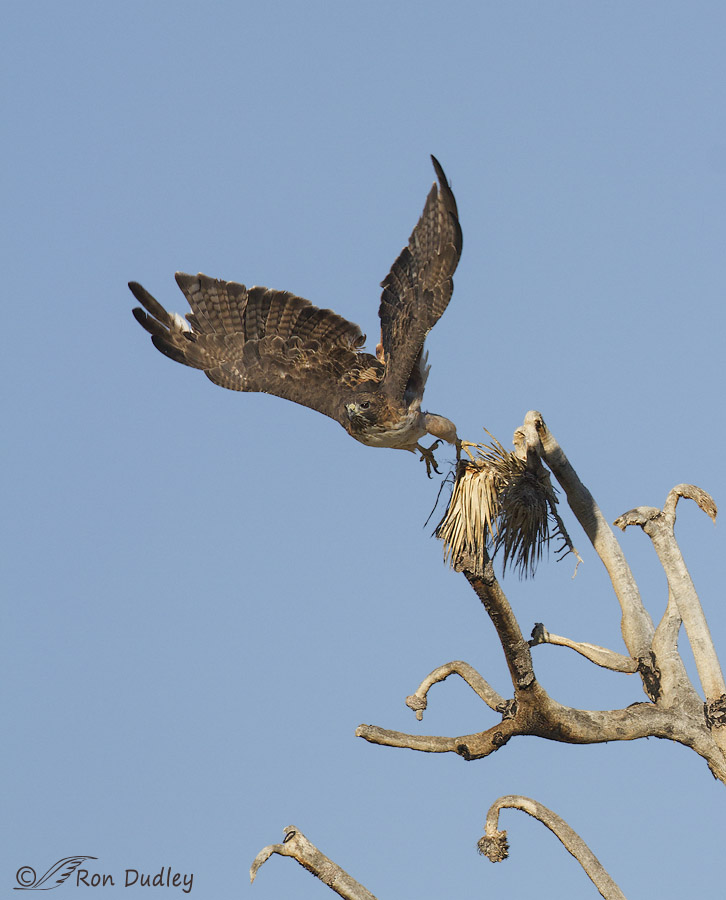
1/3200, f/7.1, ISO 400, Canon 7D, Canon EF500mm f/4L IS II USM, not baited, set up or called in
the hawk took off before the moon was low enough to include in a shot like this. Cropped differently (and awkwardly) this image includes half of the moon up top.
After a day and a half of looking for birds on this trip and mostly failing to find them we put our tails between our legs and came home. It’s a beautiful and unique area and we enjoyed the sights as we explored mostly back roads but it was the weekend and lots of other folks had the same idea (since I retired I’ve become much less fond of weekends and holidays).
As I often say, bird photography isn’t easy.
Ron


What a wonderful series! Thanks for your patience and for sharing Ron!
Charlotte
I love Joshua trees, too, and am sad to hear that they are becoming endangered. Their form is far more interesting than the average yucca, and I have fond memories of seeing them on botany field trips back in the ’60s. I also enjoyed seeing a bird that I could easily identify before reading the caption (the warbler). Sorry this trip did not work out very well for you. Maybe it will be better at another time. I hear you about weekends and holidays. Too many people out and about. Maybe being retired shortens our patience, since we are no longer forced to deal with the stress of working…
Susan, I didn’t have much patience BEFORE I retired (except with my students, up to a point) and what I had I’ve mostly lost. Other folks interrupting my shooting opportunities doesn’t thrill me and I have to constantly remind myself that they have as much right to be out there as I do. I usually manage my frustrations pretty well but then when some clown deliberately honks to scare off my bird as he goes by (happened again last week) my blood pressure does tend to spike…
It makes perfect sense to have little patience when people behave in such a stupid way. That is the most polite thing I can say and the most polite way I can say it…
I suspect we may be thinking of some of the same words to describe these kinds of situations, and people. Ahhh, discretion…
It may not be easy for you; the results are always stunning and appreciated. THANKS!
Thanks, Karen. It may not be easy but it’s nearly always fun.
My husband, with his Maine accent, calls them Yellow-rumped “wobblers”….
Cute!
Cluster to far right of bird… in fourth frame…looks like an owl! A dried owl, of course….
You “put your tails between your legs and went home””, but that poor bird flew off leaving his behind!!!
Ha, you’re absolutely right, Patty!
The Yellow Rumped Warbler was an interesting bird.
I don’t get to photograph them very often, Stephanie.